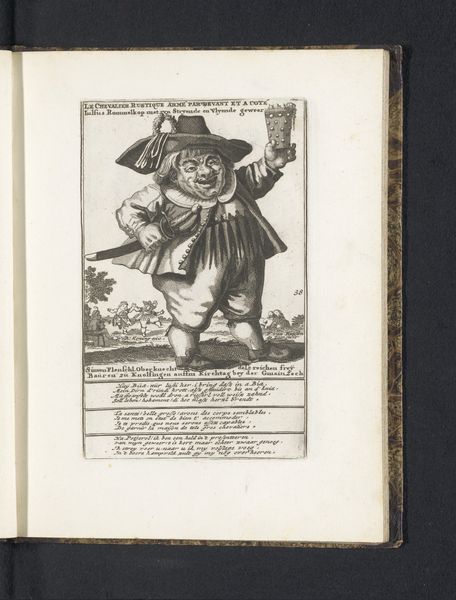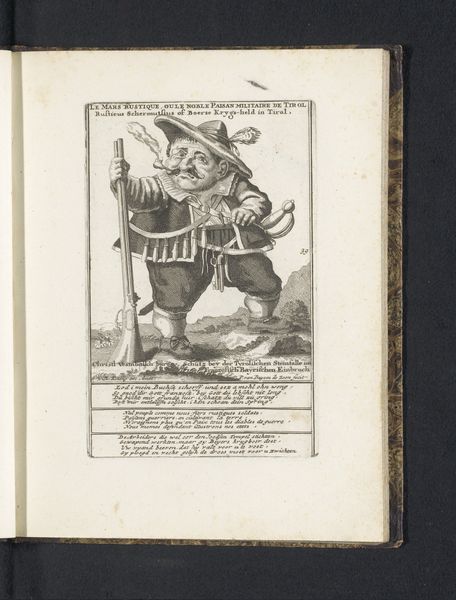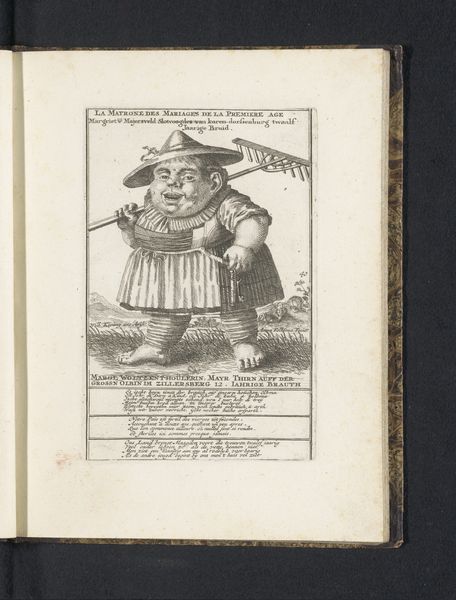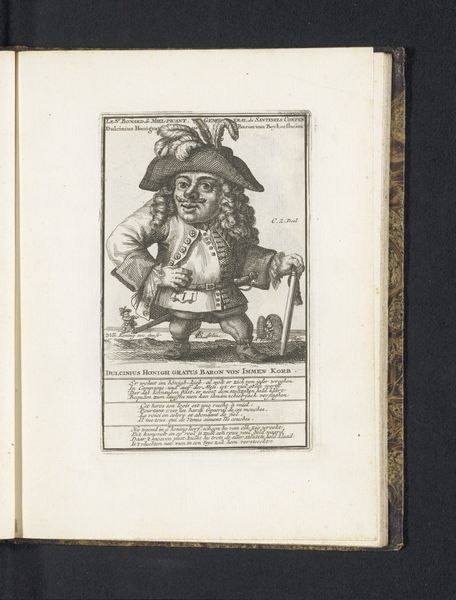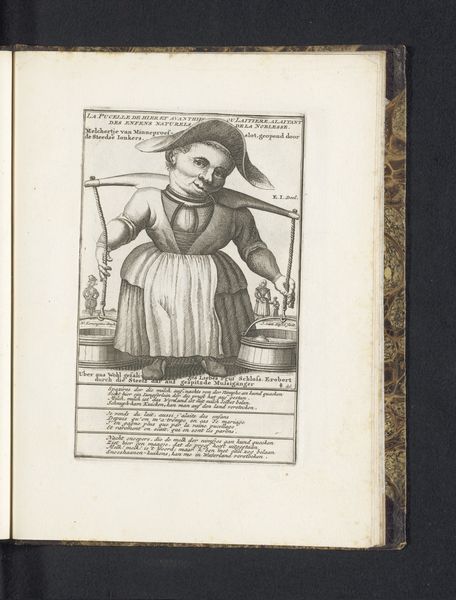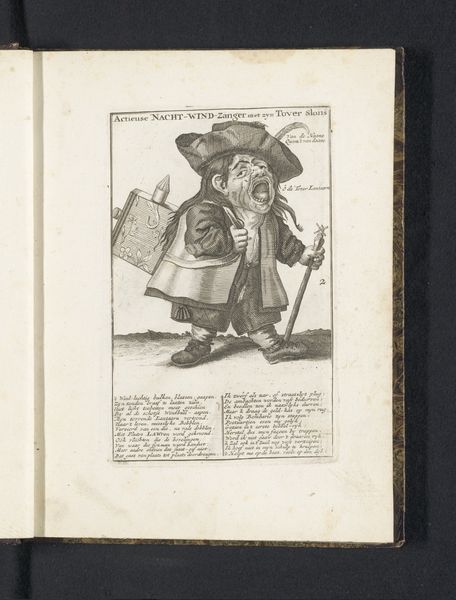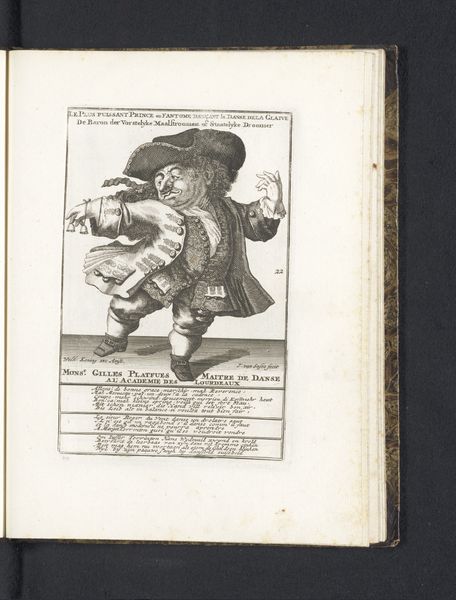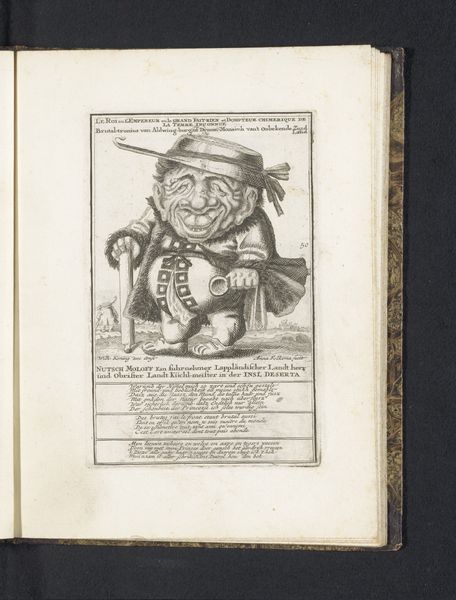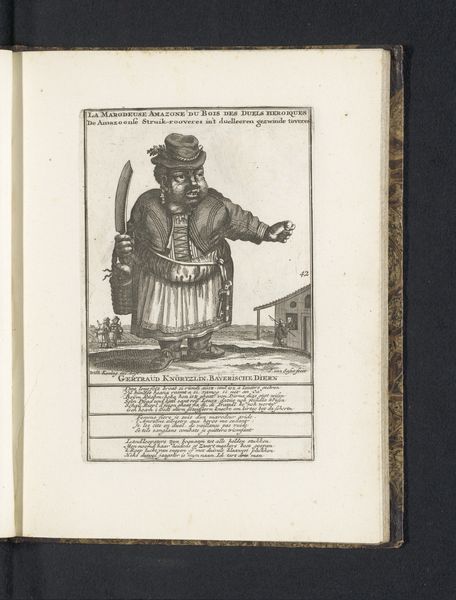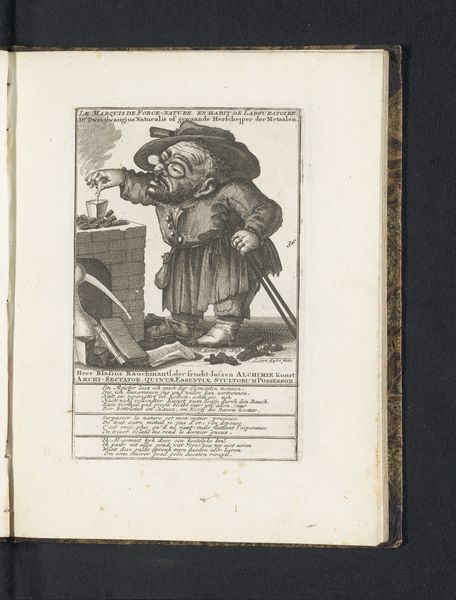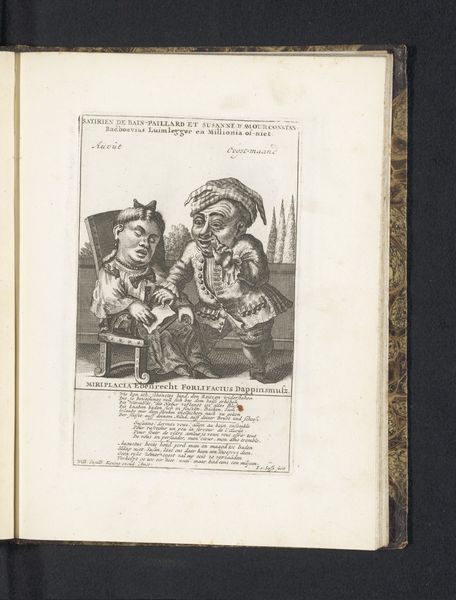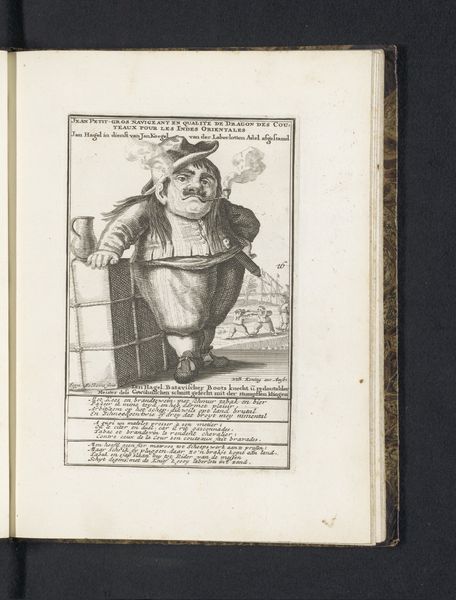
print, engraving
#
portrait
#
baroque
# print
#
figuration
#
engraving
Dimensions: height 169 mm, width 105 mm, height 227 mm, width 170 mm
Copyright: Rijks Museum: Open Domain
Curator: The engraving, “De dwerg Potjerollia van Mestenburg," made circa 1718 to 1720 by Joost van Sassen, presents a character both comical and unsettling. The primary material is the print itself—the paper and ink which form this caricature. What’s your initial take? Editor: There’s a sharp wit here, tinged with discomfort. I’m immediately struck by the social commentary embedded in this exaggerated portrayal. The subject, Potjerollia, isn’t just depicted, she's presented for judgement. What does it tell us about the socio-political climate of the time? Curator: The engraving technique allows for sharp lines and intricate detail, highlighting textures and forms in a way that suggests volume and presence despite the limitations of a two-dimensional plane. Consider the deliberate choices around depicting folds in clothing or details in the hair. This emphasizes material wealth or a parody of it. Editor: Exactly, this depiction, created through reproductive print technology makes me think about who this image was for. And what did it represent to those people? This portrait feels heavily laden with prejudices related to body image and maybe even class. How does the availability of the print shape its meaning? Curator: It brings into question who is holding the engraving, consuming this caricature. Its mass reproducibility indicates it may be held by people who would like to keep certain figures "in their place". The material choices and manufacturing tell us this portrait may be created by or purchased for a bourgeois consumer. Editor: I agree; it opens conversations around ableism and power dynamics inherent in looking at a person displayed so physically different in terms of both stature and affect. Curator: The line work on the architectural background suggests depth without truly realizing it, placing Potjerollia against society in an absurdist way, calling attention to her positioning inside and outside polite company. Editor: Reflecting on Potjerollia, it underscores art's capability as a barometer, revealing societal values—or their lack—regarding the vulnerable. Curator: And on the material process itself, considering printmaking's role as both craft and art form helps unpack its place in historical discourse.
Comments
No comments
Be the first to comment and join the conversation on the ultimate creative platform.
